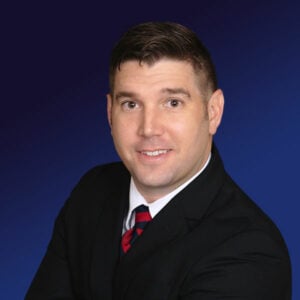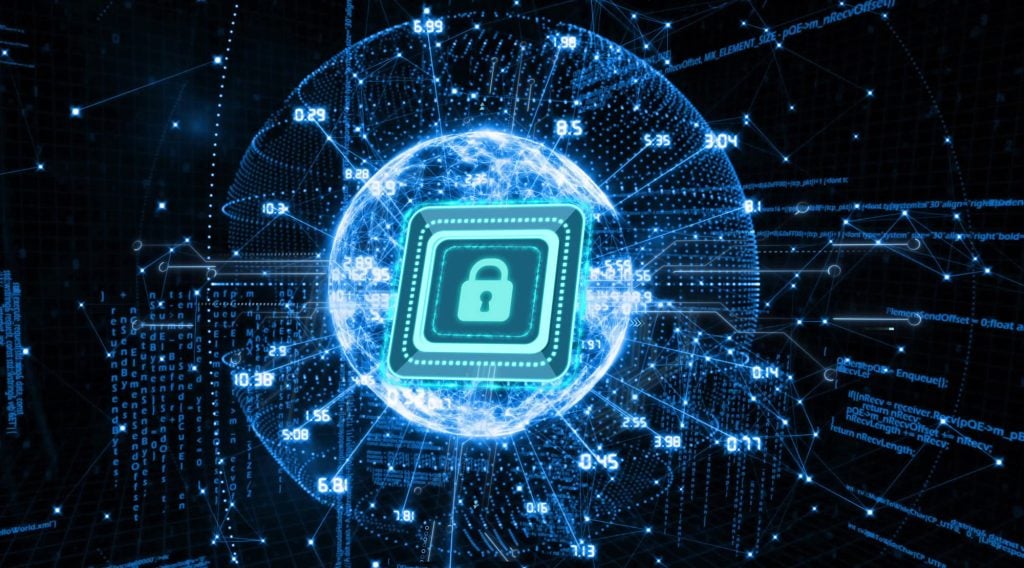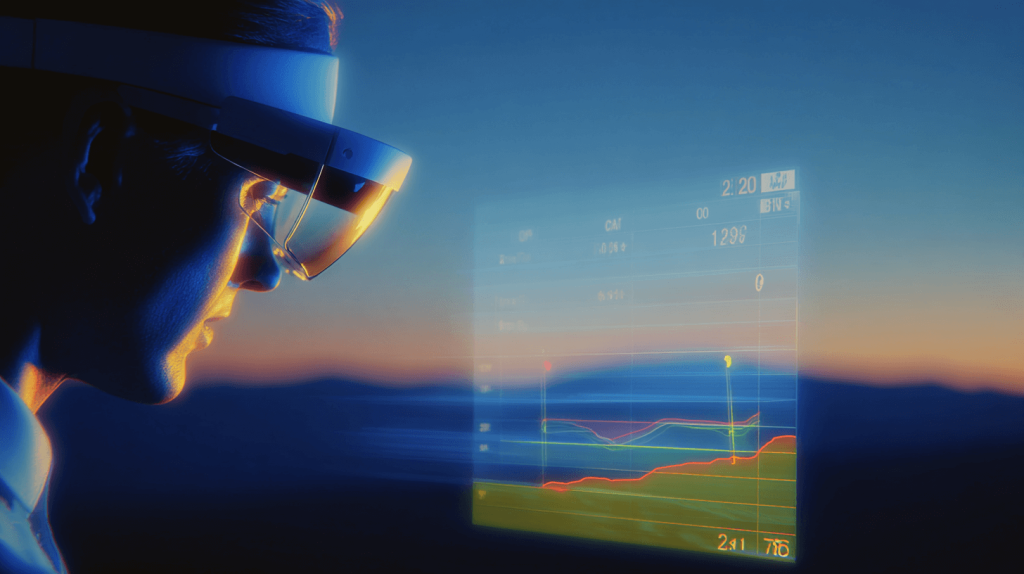If you’re seeking a patent on AI technology, you need to know the conditions of patentability before starting your patent application. These include having patentable subject matter, being novel, useful, non-obvious, and having a clear written description that meets the best mode and enablement requirements. This article will walk you through each of these requirements in detail, helping you navigate the patent process while addressing the latest developments in artificial intelligence and software patenting.
The landscape of patent law has evolved significantly in recent years, particularly as AI-driven inventions have surged—with AI patent filings more than doubling since 2002 and increasing 33% since 2018 alone. Understanding how traditional patentability requirements apply to modern innovations, especially those involving artificial intelligence and machine learning has become crucial for inventors and patent practitioners alike.
Key Takeaways
- Patentability requires that inventions fall under four distinct categories: processes, machines, manufactures, or compositions of matter, with recent guidance clarifying how AI patents and AI-assisted inventions fit within these categories.
- An invention must be novel, serving a specific utility purpose and not be obvious to qualify for patent protection; public disclosures can negate novelty, and the rapid pace of AI development has created new challenges in prior art evaluation.
- AI-assisted inventions require proper human inventorship, with the USPTO providing clear guidance on what constitutes sufficient human contribution to the inventive process.
- Navigating international patent filings is vital for global protection, and patent attorneys play a crucial role in ensuring compliance and success in patent applications, particularly for complex AI and software innovations.
Patentable Subject Matter
Your invention must fall within the realm of patentable subject matter to receive patent protection. Patent law specifies that certain inventions must belong to one of four categories:
- Processes
- Machines
- Manufactures
- Compositions of matter
These are known as the statutory categories under Section 101 of the Patent Act. Understanding these categories is the first step in determining whether your invention qualifies for a patent.
A process consists of a series of acts or steps to implement a particular result, much like a new and useful process of manufacturing a product. Machines are concrete entities made of parts that perform established functions, ranging from a new type of engine to complex computer hardware.
Manufactures are tangible articles produced through human effort, transforming raw materials into new forms or properties, such as a new type of fabric made from recycled materials that is industrially applicable. Compositions of matter include any combination of substances, whether chemically or mechanically mixed, such as pharmaceuticals or new chemical compounds. In some jurisdictions, an invention must be capable of industrial application, meaning it can be made or used in any kind of industry.
Abstract ideas, natural phenomena, and laws of nature are generally excluded from patent protection unless integrated into a practical application. Physical phenomena are also excluded from patentability. For example, while a mathematical formula alone cannot be patented, its new applications filed in a software tool might qualify. Judicial exceptions also play a role, ensuring that such subject matter is only patenting when it contributes to a practical application involving mathematical methods, including the subject matter claimed. Data structures not claimed in combination with a computer or tangible medium are considered non-statutory and generally not patentable.
Certain subject matter is specifically excluded from patent protection. Nonfunctional descriptive material, such as books or music, is also not patentable because it lacks functional utility.
Conditions of Patentability for AI and Software Inventions – Current Landscape
The patentability of AI and software inventions under Section 101 remains one of the most challenging areas in patent law. Since the Supreme Court’s Alice decision in 2014, patent eligibility has become increasingly difficult to establish for software-based inventions. The impact has been dramatic: successful Section 101 challenges increased from an average of 19 per year before Alice to approximately 217 per year after Alice (2015-2022).
The recent Federal Circuit decision in Recentive Analytics, Inc. v. Fox Corp. (April 2025) illustrates the current judicial approach to AI patents. The court invalidated four patents that used machine learning to schedule live events and TV programming, finding that claims reciting steps like collecting data, “iteratively training” a generic machine-learning model, and outputting an optimized schedule were ineligible under Section 101. The court reasoned that these claims did not improve the underlying ML technology but merely applied conventional machine learning to an abstract idea (organizing human activity).
Importantly, the Federal Circuit acknowledged that not all AI inventions are doomed, stating: “Machine learning is a burgeoning and increasingly important field and may lead to patent-eligible improvements in technology.” The court emphasized it was limiting its holding to cases where an invention simply states “do it with AI” without any technical innovation or improvement in the AI/ML.
This reflects a broader pattern in case law: claims directed to merely automating known human tasks using software/AI are routinely found abstract, whereas inventions that improve the functioning of computers or algorithms novels implementations may be eligible. The key distinction lies in whether the invention provides a specific technical improvement rather than simply applying generic or well-know AI techniques to achieve a desired business result.
USPTO’s 2024 AI Patent Eligibility Guidance
Recognizing the need for clear guidance, the USPTO issued an Artificial Intelligence Patent Eligibility Guidance Update in July 2024, pursuant to a Biden Administration executive order on trustworthy AI. This update builds on the USPTO’s 2019 eligibility framework and adds three new examples illustrating how to apply the Alice/Mayo test to AI inventions.
The updated guidance emphasizes that the USPTO “continues to be open to issuing patents on AI inventions, including the use of AI. However, there must be a technical solution to a technical problem.” This means an AI-based innovation that solves a tangible technological issue (as opposed to merely executing an abstract business idea with AI) is more likely to be deemed eligible.
Under Director Kathi Vidal’s leadership, the USPTO has maintained a pro-innovation stance while complying with case law. As Director Vidal noted, “The USPTO remains committed to fostering and protecting innovation in… AI,” explaining that public feedback on the 2024 guidance was invited to help “provide further clarity on evaluating subject matter eligibility of AI inventions while incentivizing innovations” in crucial fields.
Novelty Requirement
In most other countries, however, there is no grace period, so inventors must file a patent application before any public disclosure to preserve their patent rights. Many countries apply an absolute novelty standard, meaning any public disclosure before the filing date can destroy patentability.
Enhanced Prior Art Challenges in AI and Software
The fast-moving nature of AI and software development has created unique challenges for novelty assessment. With open-source code, academic preprints, and rapid publication cycles, the prior art landscape in these fields is particularly dense and constantly evolving. Patent applicants must navigate an increasingly crowded field where seemingly novel innovations may have been disclosed in various forms across multiple platforms.
Recent court rulings have also refined prior art doctrines in ways that affect software patents. In In re Riggs (Fed. Cir. March 2025), the Federal Circuit adopted a more rigorous test for when a patent application can claim the benefit of an earlier provisional application as prior art against others. The court held that for a published application to be prior art as of its provisional filing date, the specific disclosure being relied upon as prior art must be fully supported in the provisional filing, not just any claim finding support there.
This heightened written-description linkage for prior art could be significant in fast-moving fields like AI and software. It means an earlier-filed provisional that didn’t explicitly describe a software algorithm in detail might not serve as prior art for that algorithm, even if a later publication did describe it thoroughly.
Utility Requirement
The utility requirement mandates that an invention must serve a specific, credible, and substantial utility purpose to qualify for a utility patent. In other words, the invention must operate effectively to fulfill its intended function. In some jurisdictions, an invention must be capable of industrial application, meaning it can be made or used in any kind of industry. This means that hypothetical inventions, like perpetual motion machines that defy the laws of physics, do not satisfy the utility requirement.
Practical utility is crucial. The invention must function as intended in real-world scenarios. For example, a new type of computer program must actually perform the tasks it claims to do, and a surgical or therapeutic treatment must provide the health benefits it promises. Without practical utility, a physical invention that is a new and useful improvement cannot be patented.
In addition to practical utility, the utility requirement includes a moral condition. Inventions that involve immoral or deceptive applications do not qualify for patent protection. This ensures that patents are only granted for inventions that provide a beneficial and ethical contribution to society.
AI Inventorship: The Human Requirement
While the utility requirement is usually easily satisfied for AI and software inventions, a more pressing issue has emerged around inventorship—specifically, who can be credited as the inventor when AI is heavily involved in the inventive process. U.S. patent law has a foundational requirement that an inventor be a natural person who conceives the invention.
This came to the forefront with Dr. Stephen Thaler’s AI system “DABUS,” which autonomously generated two purported inventions. Thaler listed the AI as the sole inventor on patent applications to test the legal boundaries. The USPTO and courts consistently rejected these applications, and in Thaler v. Vidal (Fed. Cir. 2022), it was definitively held that only human beings can be inventors under U.S. law. The Federal Circuit examined the Patent Act’s language and concluded it unambiguously excludes machines from inventorship.
USPTO Guidance on AI-Assisted Inventions
While fully AI-generated inventions are unpatentable due to lack of human inventors, the more common scenario involves AI-assisted inventions where humans use AI as a tool in the inventive process. In February 2024, the USPTO issued comprehensive Inventorship Guidance for AI-assisted inventions to clarify this critical area.
The guidance establishes that AI-assisted inventions are patentable, but a human must have made a significant contribution to the conception of the invention. The USPTO provides several key principles:
Using AI as a Tool: A person does not lose inventorship rights simply by using AI. If a researcher employs an AI system to help design an invention, that person can still be the inventor provided they contribute meaningfully to the inventive idea. The guidance acknowledges that an AI might contribute more ideas than the human, yet the human can be an inventor if their input is significant to the final conception.
Mere Problem-Setting is Insufficient: A person who only identifies a goal or problem and then lets the AI figure out a solution is likely not an inventor. Simply telling an AI “find me a better battery chemistry” without contributing to the specific solution would fall short. However, the guidance notes that how the human constructs the prompt or training data for the AI can be part of the inventive contribution.
Recognition vs. Contribution: If an AI produces a result and a person merely recognizes and appreciates that result as an invention, that person may not qualify as an inventor—especially when the properties and utility of the output are apparent to those of ordinary skill. Recognition alone is insufficient without creative input. However, if the person had to analyze, test, or modify the AI’s output to conceive the actual invention, they may qualify as an inventor.
Building or Training the AI: The guidance recognizes that inventorship might lie with those who develop the AI system or its training for the specific innovation. If a team designs a unique neural network or training methodology tailored to solve a particular technical problem, the designers of the AI may have essentially pre-conceived the invention.
Ownership vs. Inventorship: Simply owning or controlling an AI that comes up with an idea does not make one an inventor. Company executives or AI owners cannot claim inventorship unless they actually contributed to the conception.
Director Vidal summarized the policy’s goal: “The guidance strikes a balance between awarding patent protection to promote human ingenuity and investment for AI-assisted inventions while not unnecessarily locking up innovation for future developments… by embracing the use of AI in innovation and focusing on the human contribution.”
Non-Obviousness Criterion
An invention must not be obvious to a skilled person in the field to qualify for a patent. The non-obviousness criterion, or inventive step, ensures that only truly innovative ideas, representing significant advancements over existing technology, receive patents, preventing trivial modifications of prior art from being patented. Patent law also requires that the invention involves an inventive activity, meaning it must not be an obvious development for someone skilled in the art.
Patent examiners determine non-obviousness by:
- Reviewing prior patents and other existing technology.
- Assessing whether the claimed invention would have been an obvious combination to someone with ordinary skill in the field at the time it was made.
- Considering objective indicators, such as the invention’s commercial success or initial skepticism, to support an argument for non-obviousness.
The Supreme Court has played a significant role in shaping the standard for obviousness, particularly through landmark decisions such as KSR International Co. v. Teleflex Inc., 550 U.S. 398 (2007). In that case, the Court rejected the rigid application of the “teaching, suggestion, or motivation” (TSM) test and emphasized a more flexible, common-sense approach to determining obviousness.
The dispute involved a patent on an adjustable gas pedal system with an electronic throttle control, and the Court held that combining known elements according to established functions is likely to be obvious if it yields predictable results. This decision significantly broadened the scope of what could be considered obvious under U.S. patent law and continues to guide examiners and courts in evaluating inventive step.
Conducting thorough patent searches helps inventors assess non-obviousness. Studying prior art allows them to understand the landscape of existing technology and ensure their invention represents a significant and non-obvious improvement.
Non-Obviousness in AI: Recent PTAB Decisions
The non-obviousness requirement presents a high hurdle in fast-moving fields like machine learning, where AI techniques and software methodologies are shared rapidly through academic papers, open-source projects, and industry publications. Patent examiners often find multiple references that, in combination, cover the elements of a new application.
Recent decisions from the Patent Trial and Appeal Board (PTAB) illustrate how obviousness is evaluated for AI inventions:
Tesla, Inc. v. Autonomous Devices, LLC (PTAB 2025): The PTAB invalidated all challenged claims of a patent on an AI-driven autonomous vehicle learning system. The patent described a method where an autonomous device learns from its environment through two training processes with different users, aggregating the learned data into a knowledge base. Tesla argued that prior art already taught this concept through sequential learning modules. The PTAB agreed, finding it obvious to have an AI device undergo multiple training sessions with multiple users, essentially viewing the patent as “apply known autonomous learning methods twice instead of once.”
Intel Corp. v. Health Discovery Corp. (PTAB 2022): By contrast, the PTAB upheld an AI-related patent involving a medical diagnostic system using Support Vector Machines (SVMs) and Recursive Feature Elimination (RFE) to identify patterns in genetic data. Although both SVM and RFE were known algorithms individually, the PTAB found it was not necessarily obvious to combine these components in the specific way claimed. The Board noted that just because AI inventions share common building blocks doesn’t mean any combination is obvious, particularly when there’s no clear teaching or motivation in the prior art to make the specific combination.
These decisions illustrate a key principle: obviousness in AI is highly context-dependent. Merely applying routine AI techniques to known problems, or using AI to automate existing human tasks, often results in obviousness findings. However, inventions involving non-obvious technical advances—new model architectures, novel training techniques, or unique algorithm combinations yielding unexpected results—can overcome obviousness challenges.
Examiner Trends and Skill Level Assessment
Under Director Vidal’s leadership, there’s increased focus on documenting the level of ordinary skill in AI-related applications. The USPTO’s AI initiatives include studying whether the “person of ordinary skill” should be presumed to have access to AI tools, which could impact obviousness standards. For now, applicants should assume examiners will use a highly skilled artisan (often PhD-level researchers in AI) as the benchmark.
Written Description and Enablement
A sufficient written description is essential for a successful patent application, providing enough detail for someone skilled in the art to understand and reproduce the invention without ambiguity. This ensures clear communication and replicability.
The invention must be sufficiently disclosed in the patent application so that a person skilled in the art can carry it out.
The enablement requirement complements the written description, ensuring the patent specification contains all the features necessary for a person skilled to make and use the invention without excessive experimentation. This requirement guarantees that the invention is not only well-described but also practically achievable.
AI-Specific Disclosure Challenges
AI inventions present particular challenges for Section 112 requirements due to their complexity and often unpredictable results. Recent legal developments emphasize that broad functional claims must be backed by detailed disclosures—a trend significantly affecting AI patents.
The Federal Circuit’s decision in In re Starrett (Fed. Cir. 2023) highlighted these challenges. The case involved a patent application directed to a system using machine learning to identify security threats in real time. However, neither the claims nor the specification provided sufficient detail about how the machine learning component functioned or how it achieved the claimed results.
The court found the claim not enabled because the applicant had invoked “machine learning” in a black-box manner, merely asserting functionality without describing the underlying algorithmic processes or data structures required to implement the invention.
This aligns with broader trends of courts policing overbroad software patents under Section 112. In Amgen Inc. v. Sanofi, 598 U.S. 594 (2023), the Supreme Court invalidated Amgen’s broad functional genus claims for antibodies that block a specific protein, finding that the disclosures failed to enable a skilled artisan to make and use the full scope of the claimed invention without undue experimentation.
While Amgen arose in the biotech field, the Court’s reasoning applies across technologies. By analogy, a claim reciting “an AI system configured to solve any image recognition task” without disclosing specific models, architectures, or training methods would likely be found invalid under Section 112 for lack of enablement or written description.
Best Practices for AI Patent Disclosure
Given these challenges, practitioners have developed specific strategies for AI patent applications:
Algorithmic Details: Instead of claiming generic “machine learning models,” specifications should describe specific architectures, training procedures, and implementation details. For example, specifying “a convolutional neural network with [specific layers] trained via [technique] on [type of data].”
Technical Implementation: Patents should include flowcharts, pseudo-code, or even source code snippets to demonstrate possession of the solution and enable reproduction. The goal is showing inventors actually possessed the solution rather than merely identifying a desired result.
Experimental Results: Including performance metrics, comparative data, and specific examples strengthens both written description and enablement while potentially supporting non-obviousness arguments.
Alternative Approaches: Describing multiple implementations or variations can broaden claim scope while ensuring adequate support throughout the specification.
The “AI-Skilled Person in the Art” Concept
The USPTO is examining whether advancements in AI should affect the perspective of a skilled artisan—sometimes called “AISITA” (AI-skilled person in the art). The 2024 USPTO Request for Comments asks whether the level of ordinary skill has changed now that AI tools are available. A higher skill level could mean patent applications need more disclosure, assuming routine experimentation can accomplish more. However, this remains speculative; the skilled person is currently considered human, albeit equipped with modern tools.
Statutory Bar Considerations
Statutory bars are legal provisions that can prevent the patentability of an invention based on certain public disclosures, highlighting the importance of timely patent filing. Under U.S. patent law, if an invention is publicly disclosed—through public use, sale, offer for sale, or publication—more than 12 months before the effective filing date of a U.S. patent application, that disclosure acts as a statutory bar and renders the invention unpatentable.
Public use of the same invention constitutes a statutory bar regardless of geographic location. Additionally, a sale or offer to sell an invention prior to the effective filing date, unless the activity was primarily for experimental purposes or involved undue experimentation, can invalidate a patent—even if the sale occurred privately or without widespread public awareness.
Understanding and navigating these statutory bars is crucial for securing patent protection under the Patent Act, particularly in fast-moving fields where the temptation to publicize innovations early is strong. Inventors should ensure that a patent application is filed within 12 months of any public disclosure to preserve their rights.
International Patent Filings
International patent filings are essential for inventors seeking global protection. The European Patent Office (EPO) serves as a receiving office for international patent applications under the Patent Cooperation Treaty (PCT), streamlining the process of securing patent protection in multiple countries.
The EPO offers comprehensive search and examination services for PCT applications, aiding inventors in navigating international patent law. Applicants can accelerate the processing of their Euro-PCT applications, potentially saving up to 30 months.
The EPO also provides resources and guidelines for applicants interested in filing international patent applications, proving invaluable for inventors seeking global protection.
Role of Patent Attorneys
Patent attorneys guide inventors through the complexities of patent law, ensuring compliance with patentability requirements and navigating the intricate legal landscape. Their role has become even more critical with the emergence of AI-related patent challenges.
Patent attorneys assist with:
- Patent searches and filings
- Offering expert advice on patent protection potential, particularly for AI and software inventions
- Drafting applications that meet stringent patent office requirements and address modern challenges like AI inventorship and algorithmic disclosure
- Navigating Section 101 eligibility requirements for software and AI patents
Their expertise is crucial in ensuring the success of patent applications, particularly in complex technological areas. In patent disputes, patent attorneys represent clients in litigation to protect intellectual property rights, making their role indispensable in securing and defending patent protection for inventors.
Modern patent practice increasingly requires attorneys to understand not just legal requirements but also technical nuances of AI and software development, ensuring applications can withstand scrutiny under evolving examination standards.
Current USPTO Policy and Future Outlook
The period 2022-2025 has been marked by the USPTO’s proactive engagement with AI and patent law challenges. Under Director Kathi Vidal, the Office has convened AI-focused partnerships, sought extensive public input, and issued guidance in multiple areas including eligibility, inventorship, and examination procedures.
The Executive Order on Safe, Secure, and Trustworthy AI (October 2023) directed the USPTO to clarify “issues related to AI and inventorship of patentable subject matter” within 120 days. The resulting guidance was delivered on schedule in early 2024, demonstrating the administration’s commitment to addressing these issues promptly.
In January 2025, the USPTO published its first comprehensive AI Strategy, outlining how it plans to both leverage AI internally and adapt IP policy for AI-driven innovation. This strategy acknowledges that AI is changing the innovation landscape and affirms that the Office will “monitor emerging AI-related matters” and support updates to judicial precedents or legislation as needed.
From an examination standpoint, evidence suggests examiners are now better equipped with AI-specific training. The subject matter eligibility examples for AI, inventorship guidelines, and examiner training modules mean patent examiners can approach AI applications with clearer frameworks, potentially leading to more consistent outcomes.
Looking ahead, stakeholders are watching for potential legislative changes. Congressional discussions about reforming Section 101 to address Alice test unpredictability continue, with Senators Thom Tillis and Chris Coons circulating draft bills in recent years. Any such reform might broaden eligibility for software/AI inventions but would likely increase pressure on other patentability requirements to ensure patents are warranted.
Speak With an Experienced Intellectual Property Attorney
At RLG, our attorneys have the experience and insight to guide you through every stage of the intellectual property process—whether you’re protecting a novel invention, securing your brand, or safeguarding original works of authorship. Schedule a Free IP Protection Strategy Call to learn how we can help you protect our valuable intellectual property.
The RLG Guarantee
In addition to a fixed-fee billing approach, RLG offers a money-back guarantee on all prior art searches, provisional patent applications, design patent applications, and trademark applications. To be clear: should our team determine that your invention is not patentable in light of the prior art, a full refund will be provided. If patentable, we will credit the cost of your search towards your new application.
For the trademark and design patent applications, this means that if your application does not receive a notice of allowance for any reason, we will provide a full refund. Our trademark and design patent application packages include all search, preparation, office action, USPTO correspondence, and USPTO filing fees. Please book a Free IP Protection Strategy Call take our intelligent IP quiz to see what protection is best for your invention.
Summary
Securing patent protection for your inventions involves navigating a complex set of requirements that continue to evolve, particularly in the rapidly advancing fields of artificial intelligence and software. From ensuring your invention falls within patentable subject matter to meeting novelty, utility, and non-obviousness criteria, each step is crucial and increasingly nuanced.
Modern patent practice must account for new challenges: AI-assisted inventions require careful attention to human inventorship requirements, software patents face heightened scrutiny under subject matter eligibility standards, and the fast pace of technological development creates dense prior art landscapes. The USPTO’s recent guidance provides clearer frameworks for these challenges, but successful patent prosecution requires staying current with evolving standards and court decisions.
A sufficient written description and understanding of statutory bars remain fundamental, but modern applications benefit from detailed algorithmic disclosures and technical implementation specifics. The shift toward more rigorous Section 112 requirements means that robust disclosure strategies are more important than ever.
As you embark on your journey to protect your innovations, remember that patent attorneys can provide invaluable guidance, particularly for complex AI and software inventions. Their expertise can help you navigate the patent application process, ensure compliance with evolving requirements, and secure the intellectual property rights your inventions deserve. The landscape in 2025 is more clarified than in previous years, even as new challenges emerge with advancing technology.
Keep innovating, stay informed of the latest developments in patent law, and ensure your groundbreaking ideas receive the protection they need in an increasingly competitive and technologically sophisticated marketplace.
Frequently Asked Questions
What is considered patentable subject matter?
Patentable subject matter encompasses processes, machines, manufactures, and compositions of matter, while abstract ideas, natural phenomena, and laws of nature are typically excluded unless they are part of a practical application. For AI and software inventions, the key is demonstrating a specific technical improvement rather than merely applying known techniques to achieve business results.
How does the novelty requirement impact patent applications?
The novelty requirement significantly impacts patent applications by necessitating that an invention be unique and not previously disclosed. Inventors must perform comprehensive prior art searches and be aware of the 12-month grace period in the U.S. In fast-moving fields like AI, the dense prior art landscape makes thorough searching even more critical.
What constitutes practical utility for a utility patent?
Practical utility for a utility patent requires that the invention must operate as intended in real-world applications, rather than being merely hypothetical. AI and software inventions typically satisfy this requirement easily, but the invention must demonstrably perform its claimed functions.
How is non-obviousness determined?
Non-obviousness is determined by evaluating whether the invention would have been apparent to a person of ordinary skill in the relevant field. Patent examiners review prior art and consider factors such as commercial success and initial skepticism. For AI inventions, the key is showing more than routine application of known techniques—there must be a non-obvious technical advance or unexpected result.
Can AI be listed as an inventor on a patent?
No, only human beings can be inventors under U.S. patent law, as established by the Thaler v. Vidal decision. However, AI-assisted inventions are patentable if a human makes a significant contribution to the conception. The USPTO’s 2024 guidance provides specific criteria for determining when human contribution is sufficient for inventorship.
Why are patent attorneys important in the patent application process?
Patent attorneys are essential because they navigate the complexities of patent law and ensure compliance with patentability requirements, particularly for modern challenges involving AI and software patents. Their expertise in conducting patent searches, drafting applications that meet current standards, and representing clients in disputes significantly enhances the likelihood of successful patent acquisition in an increasingly complex legal landscape.




